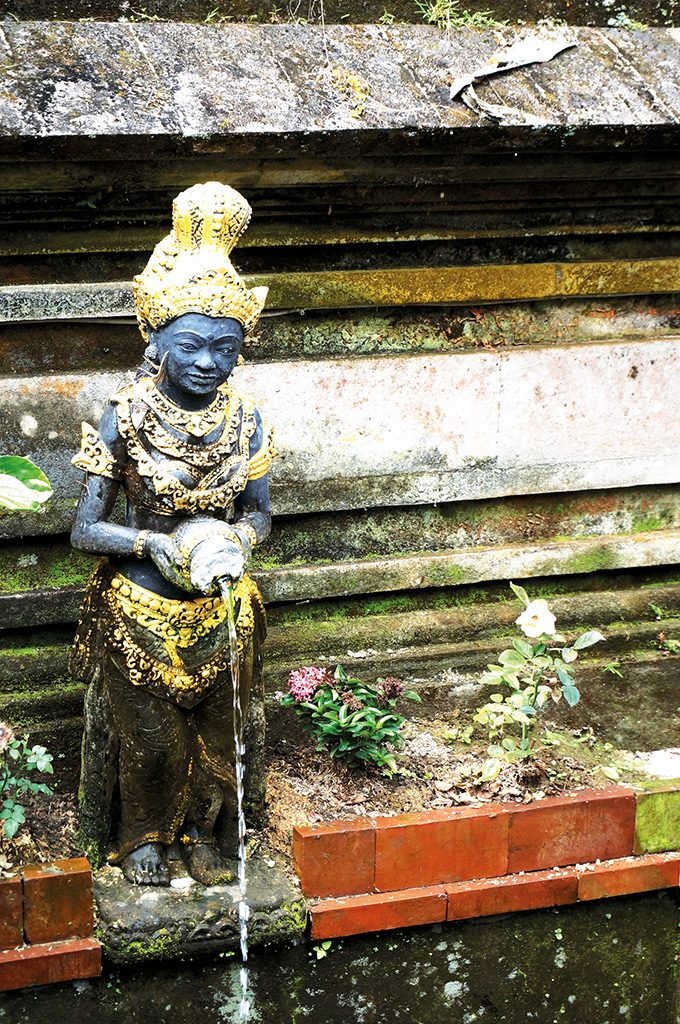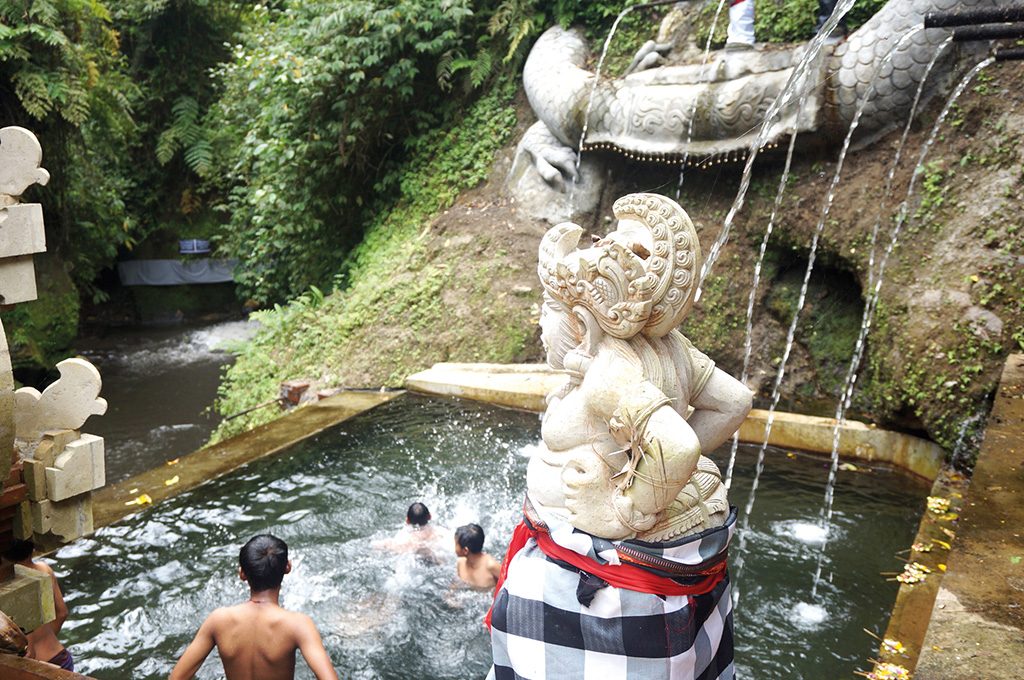Bangli is best known for its Kintamani highland, home to the mythical Lake Batur and Mount Batur. Both residents and visitors usually flock to the area for the Batur sunrise trek, or simply enjoying the breathtaking bird’s eye view of the lake from the terraces of the restaurants on the area’s higher ground. But if you explore Bangli deeper, you’ll be amazed by the regency’s many other charms not listed on any guide book – Pura Taman Pecampuhan for instance.

Driving around the deep ridges of Bangli on your own can at times lead you to pleasant surprises, especially if you get lost! Of course, getting lost can seem like a most frustrating idea, but at the same time this could also mean a closer encounter with everything that is ‘real Bali’ – not to mention, there are plenty of interesting things going on off the main streets.

Bangli in general is a place where you can feast your eyes on its awe-inspiring landscapes. The enchanting natural beauty that awaits you certainly justifies the long drive. This region is still relatively quiet (unlike the island’s south), and to avoid getting lost, bring a map and familiarise yourself ahead of time with two or three of the towns you will encounter along the route.

From a cultural visit of the traditional village of Penglipuran to an adventure to hidden waterfalls, and museum visits (yes, Bangli has museums) to a pilgrimage journey to Pura Kehen (one of most important temples in Bali), Bangli has plenty to offer. And speaking of pilgrimage journeys, Bangli is also home to a number of melukat sites for cleansing rituals, such as Pura Taman Pecampuhan.
Indeed, when it comes to melukat, the pools at the popular Pura Tirta Empul will immediately spring to mind. Here, both the Balinese and non-Balinese come to lay their offerings, and bathe in the holy springs at the temple to cleanse themselves off of negative energy. On the other hand, Pura Taman Pecampuhan, a mystery to most visitors to Bali, if not all, is a worshipping place where so far, or at least at the time of writing this, only the local Balinese and the Balinese from other areas across the island come to visit.

Pura Taman Pecampuhan, though not as big as Pura Tirta Empul, is a feast for the eyes, and the natural atmosphere is just soothing. Nestled on a river bank in Bangli’s Abuan village, the spring at the temple is considered holy, for it’s found at a meeting point of two rivers. In addition to the river and two small waterfalls used to cleanse, a well-decorated (in that typical Balinese style) man-made pool used as the cleansing area will easily invite just about everyone to jump in. There are nine fountains pouring out the tirta or holy water at Pura Taman Pecampuhan.

Arriving at the temple area, after passing the cemented steps down to the river, you will spot a big head of a dragon snake carved from limestone into the hill, with its tail leading down to the pool area. A cool breeze and serenity will greet you as you go down the steps into the temple’s courtyard – you might just be the only visitor there. From the courtyard, you can gaze upon the greenery that surrounds the premises, taking in the natural beauty serenaded by the harmonious sounds of running water.

The regular visitors to Mengening are pilgrims who come for prayers in the temples and collect holy water from the temple’s holy springs. Half way down the temple is a small gutter with crystal clear water running through it, where the local villagers bathe.

Natural beauty and traditional Bali are beautiful highlights when on the way to Pura Taman Pecampuhan; it’s really worth it to make a stop and shoot some photos. And though the temple hasn’t seen the likes of mainstream tourism, just about anyone is welcome here.










